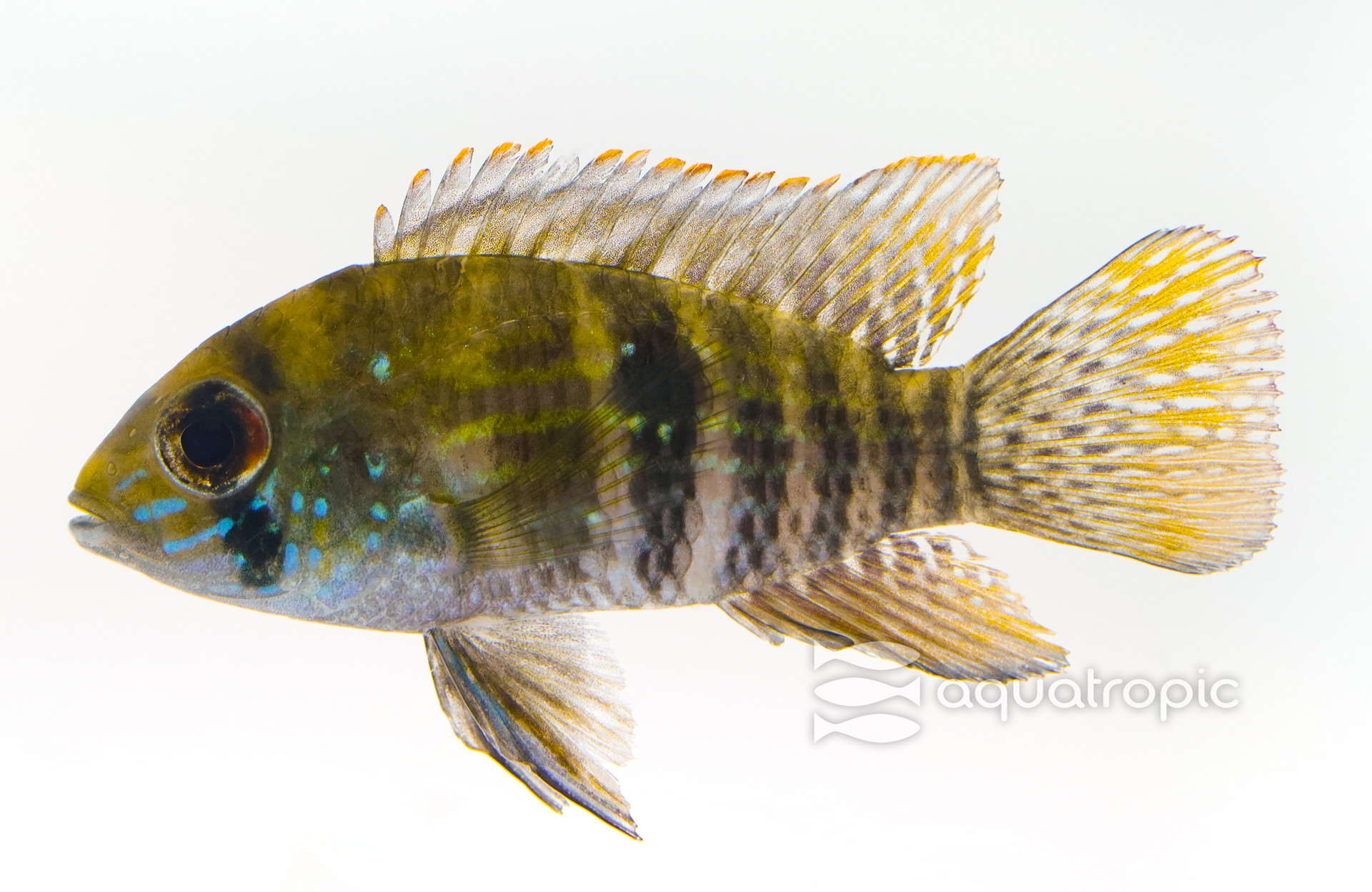The Electric Blue Acara

The Electric Blue Acara (Andinoacara pulcher) has a great species name in that “pulcher” means “beautiful” and this mainstay species is certainly that. This being said, they are rarely blue, except for the males in their full spawning gorgeousness. Usually they are silvery olive green with a few pale bars over their body and some bright blue lines on their gill plates. This greenish color is likely the reason for their other common name “Green Coscarob.” Males will turn brilliant electric blue when ready to spawn, which luckily, is pretty easily achievable in even fairly small home aquariums.
Andinoacara pulcher (Aequidens pre-2009) is a South American Cichlid, originally hailing from Venezuela and Trinidad, where they inhabited an extraordinary range of habitats, from stagnant ponds to clear streams. They are still commercially fished for the aquarium trade in these environments, though rarely available wild caught in the United States as the vast majority of specimens available here are aquacultured.
Acaras are hardy cichlids that can adapt to a wide variety of aquarium settings, though wild caught ones were traditionally slightly more susceptible to “less than perfect” aquarium settings, aquacultured specimens are more tolerant. Ideal displays should have a soft substrate and stable cover. Driftwood and floating plants are excellent choices. These cichlids will dig and move substrate around, so rooted plants are problematic. Aquariums needn't be that large, as a 50 gallon tank would be enough to house a pair of these fish long term. They will reach about 5 inches at adulthood, and this gives them a “territory” to defend, larger aquariums would obviously not be a problem as well. In larger aquariums hey can be housed with other fish of similar personality as they are fairly docile as far as cichlids go.
Feeding them is very straightforward as most have been eating pelletized foods their entire life, even wild specimens generally take to processed foods very quickly. For variety purposes and balanced nutrition, we also suggest feeding bloodworms, fresh water mysids and other small chopped meaty foods.
Pairs can be made by adding small groups of juveniles together and removing the excess fish when a dominant pair establishes themselves. When they prepare to spawn, both fish will clean off a rock for the female to lay eggs on; they will both guard the eggs which hatch quickly (less than a week), they will continue to guard the fry for the better part of a month. The male will hide the young in his mouth when threatened so don't freak out, he isn't eating them!
Whether you are an experienced hobbyist looking for another gorgeous fish to add, or a novice looking for a first time cichlid, you can't go wrong with the Acara. Give them enough space, a high quality food, and thoughtful choices for tank mates and you'll get an active, gorgeous aquarium specimen for years to come.